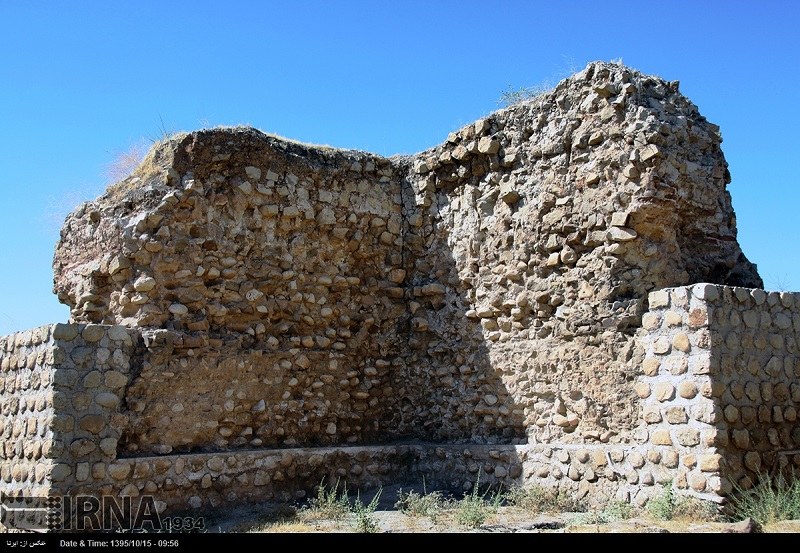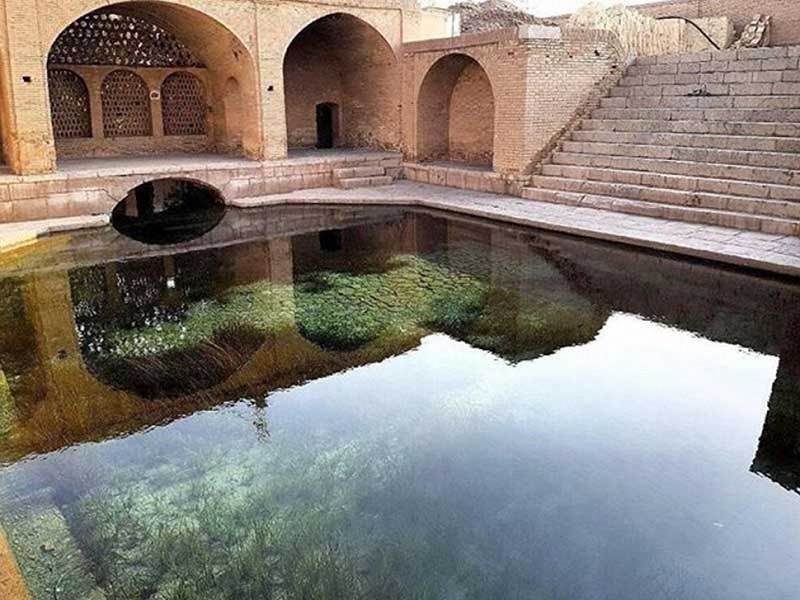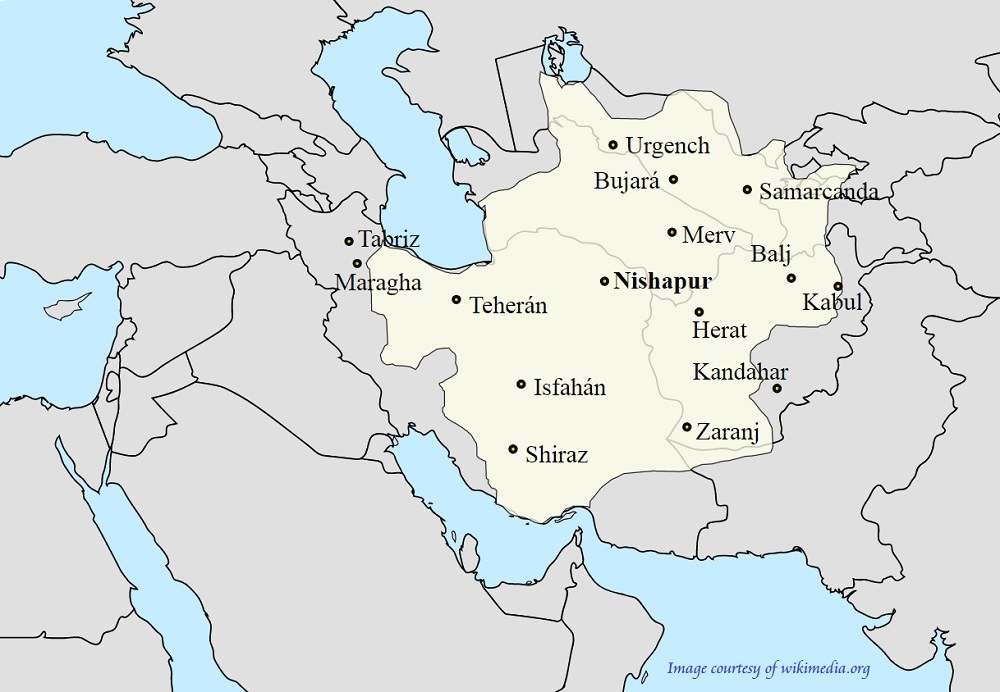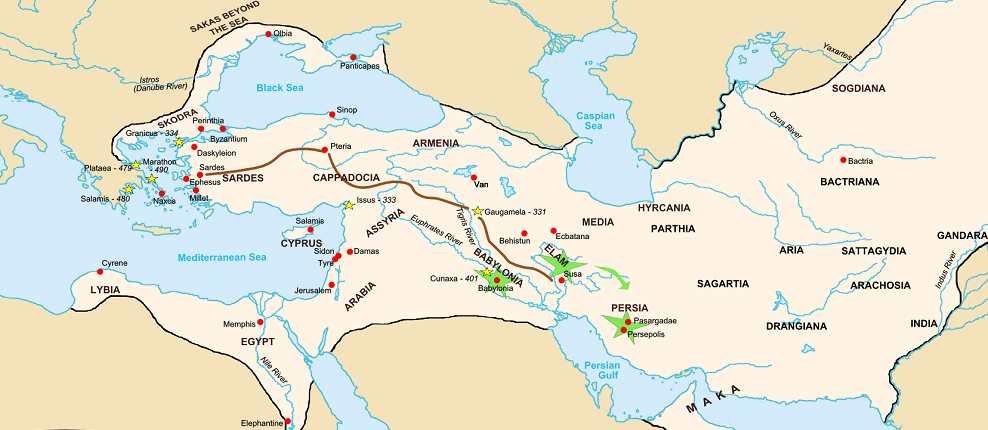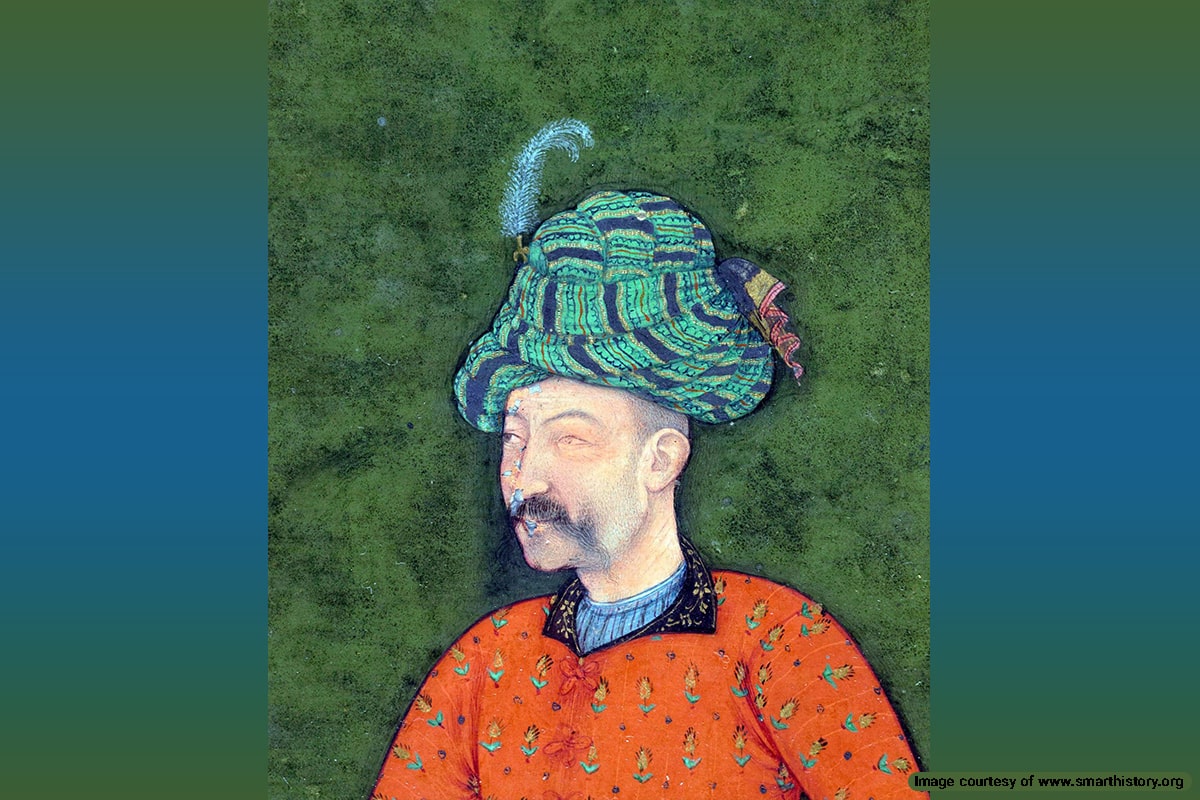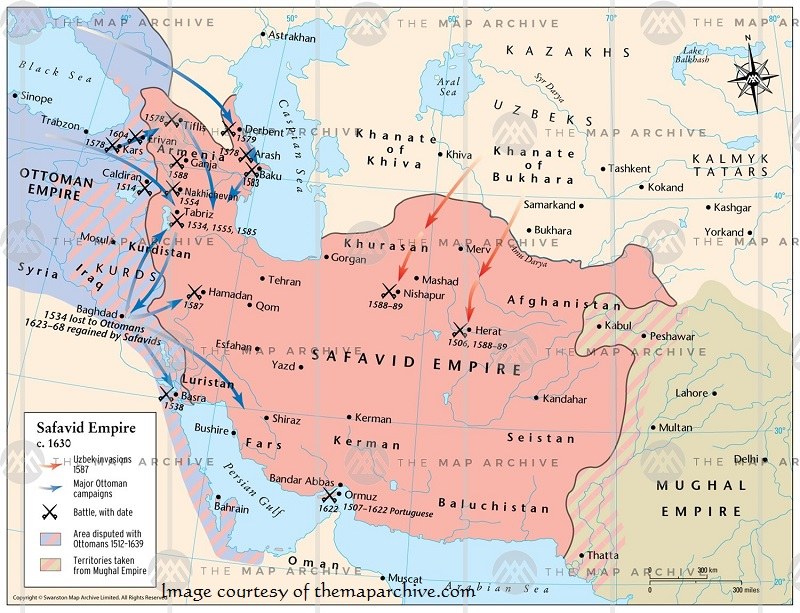
The suppression of Shiites and their movements toward the end of Timurids’ era had made Turcoman, Turkic and Tajik biased people ready for a fundamental movement. The history of Safavids is the story of the people who made such a movement.
Sheikh Safi-ed-Din was a Sufi who had lived 300 years before the collapse of Timurids in Ardebil, North West of Iran. Although it is not known if Sheikh Safi-ed-Din was a Sunni or Shiite, some of his followers united and organized Shiites three centuries later to set out for a powerful movement. The result was readiness for an extremely brutal and unforgiving armed movement.
The Khaneqah of this Sufi’s followers had turned into a holy place in which there was always a High Sufi leading his followers. After the Sufi’s death, according to some agreed tradition or his will, his son succeeded him. Gradually anti-Sunni sentiments grew larger and larger there.
On the other hand, the Sufi’s genealogy went back to the first Imam of Shiites. So, they could conclude when the household of Ali was killed by brutal Sunni rulers in power, Shiites should rise to take revenge. They aimed at founding a Shiites monarchy and declare the “true religion”.
Therefore, the followers of the Sufi, who were ready to fight, were attracted to Georgia. They considered their Sufi a manifestation of divinity and symbol of Velayat. So, this could justify their religious obligation toward action, legitimize martyrdom in jihad against infidels and bring them prosperity.
As the first step, the Sufis of Ardebil could seize the disintegrated local government of Tabriz under the leadership of Esmail. This city had been ruled by Ozun Hasan, who was a Turcoman from Aq-Qoyunlu tribe. Esmail became the High Sufi, absolute master, Sheikh (elder) and sultan at the age of 6.
After a few years, he went to Shirvan with lots of other Sufis to take the vengeance of his father. Later he got back triumphantly to Tabriz to officially announce his founding a new dynasty. He was still very young, probably 13. In spite of the fact that the majority of people in Tabriz were Sunnis, he declares Shiite Islam as the state religion.
This is how the history of Safavids started by Esmail, later known as Shah Esmail I.
Establishment of Safavids in Iran’s History
According to Esmail’s order, the name of the Shiites’ first Imam, Ali, was added to the prayer calls. Also, the names of Sunnis’ first three caliphs were cursed by the rulers. This raised a lot of objections. Sufis carrying axes in the streets hit anyone opposing this order. The High Sufi had allowed them to kill all if necessary.
Therefore, this order was obeyed in the realm of the young king’s sovereignty. Shah Esmail’s offensive followers were everywhere to take care of the situations. As they wore red hats, they were called “Qezel Bash” (red-hatted people).
Then, the world famous Shiite theologians were invited to come to Iran to spread and elaborate Shiite doctrine and help with the execution of its commandments. This could help Shiite Islam be recognized in Iran. In fact, the declaration of Shiite faction as the state religion in Iran was a kind of declaring war on neighboring Sunni countries, namely Ottoman government, Uzbek government, Turkic and Tajik tribes.
Shah Esmail deposed any Aq-Qoyunlu rulers governing locally in any parts of Iran. Then, he defeated the khan of Uzbeks and pushed him back from Khorasan, northeast of Iran. He could not win the battle against Ottomans as Iranian army lacked artillery and modern weapons of the day. It was then that he thought of establishing ties with European countries, but he died and could not take any steps in this regard.
This is how Esmail started the history of Safavids with challenging Sunnis and military campaigns.
Other Safavid Kings
Esmail’s successors were in constant war with Iran’s neighbors who attacked Iranian soil sporadically for no reason. Sometimes, they managed to push them back and sometimes they did not. Most of his successors were either too focused on harem’s life, sensuality and drinking or too much concerned about religious issues. At times, they were too much preoccupied with both.
The period when Shah Abbas I was on the throne, Safavid government was at the zenith of its glory. Right after he had ascended the throne at the age of 18, he faced the challenge of foreign armies like Ottomans and Uzbeks within Iranian territories. Khorasan, Georgia, Azarbaijan and Luristan had been occupied by them. The government administration was also in a chaotic condition. He eradicated all the problems with the help of his trainer. Then, he arranged some tricks to get rid of him too.
As Qezelbash army only obeyed its own top commanders, Shah Abbas founded a modern and disciplined army. Then, he kept one third of Qezelbash troops in his modern army with good advantages and called them Shahsavans (meaning shah enthusiasts). Also he founded an army of irregulars and equipped them with 60,000 rifles and 500 canons in Fars province, central Iran. He imported military weaponry and equipments from England. He had big contracts with a British company called East India Company. It must be mentioned that he never gave any part of Iranian soil to them in return.
He moved Safavid capital from Qazvin to Esfehan. Esfehan flourished under his rule significantly. Implementing his modern army, Shah Abbas succeeded in forcing Portuguese out of the Persian Gulf and Bahrain shores after almost a century. He drove out all the foreign forces from Iranian soil like Hormoz and Qeshm islands and went further and claimed Baghdad and Today’s Iraq, which had been an integrated part of Iran, especially for its Shiite shrines.
Ottomans had occupied Shiite cities where those shrines were located. Those cities remained part of Iranian territories up to the end of Shah Abbas’ rule. Shah Abbas restored the damages in those religious sites and built glorious structures there. The history of Safavids was the era that these shrines were quite flourishing.
Ottomans were afraid of Iranian government having good ties with European countries, but this had already been well-established.
The Prevalent Administration System
From administration and Military points of view, the Safavid era was a distinguished period in the history of Iran. During the reign of authoritative kings of this period, a centralized ruling power was in place.
Notwithstanding, some of the ethnic groups sought decentralization and independence. Administrators and militants constituted the governing class. The top commanders of the Safavid army were first Turks or Turkmen. Later, Georgians and Armenians took over. Persian speaking Tajiks were also working as administrators. All these people were trusted by Shah and most probably by top clergymen.
Merchants, craftsmen, etc were the middle class people who were often Tajiks. In fact, they were the people who had guarded and preserved Iranian traditions, because the language of the court was Turkish.
Although top clergymen were entitled the right to constant and unlimited supervision on religious issues, whenever an authoritative king was ruling, his determination was above all. The history of Safavids witnessed such comprehensive authority and dominance over religious and political aspects of the country.
Kings’ Achievements
After the Arabs’ invasion, Iran had never been integrated and united like in the Safavid era. Shah Esmail succeeded to found a unified Iran once again. Under Shah Abbas I, foreign forces were driven out of Iranian territories. Good relations were established with European countries although they were limited to commercial relations.
He did a lot to get economy thrived in Iran. He built great number of roads, bridges and caravansaries. Roads were made secure to make sure trading is safe across them. Foreign trade flourished although it was monopolized by the Safavid king.
Throughout the history of Safavids, Iran tolerated other religions. Of course, this did not include the Sunni faction of Islam. In some cases, he did not consider it right to observe the policy of tolerance because of security concerns.
There was no monopoly in exportation of various goods by the kings. Of course, Iran never exported its valuable items and productions and never imported useless foreign items. Domestic production and trade was completely independent from the government.
The king and local governors didn’t consider themselves allowed in producing or trading Iranian items. What was needed inside the country could not be exported. Armenians were doing well in foreign trade. In fact, for the same reason Shah Abbas I wanted them to migrate to the capital, Esfehan.
Compared to the previous periods, Safavid era was the flourishing time for culture and sciences although there were lots of dominant restrictions and superstitions. Of course, various religious fields of study went through lots of developments. Sufism declined as a consequence of top Shiite clergies’ opposition to Sufis’ orientations.
Safavids’ Big Mistakes
Under the rule of Shah Soleyman, who ruled for 29 years, Iran experienced peace and stability. It was not due to his efficiency. In fact, Uzbeks and Ottomans were busy with their own domestic Affairs. Shah Soleyman was too lucky as the history of Safavids indicates that Uzbeks and Ottomans had vicious plans for Iran.
He was a brutal king and spent most of his time greedily in drinking and sensuality. He had no tolerance toward Christians and Jews. Actually, under the influence of some religious authorities, he persecuted them too.
He led Iran toward severe poverty and decline. During his reign, Mullah Mohammad Baqer Majlesy had become very influential in Safavid court like Cartir, who played a key role in Sassanians’ decisions. Under his influence, Shah Soleyman opposed other religions and even Sunnis and their Sufis very seriously.
During the time of Sultan Hossein, as a result of the government’s persecuting Sunnis, there were uprisings by Sunni Muslims in Kurdistan and Khorasan. The religious government of the founder of Safavid dynasty was changed into the governance of religious authorities. The absolute power of such officials had paved the way for corruption and oppression.
Judiciary system was very corrupt. Paying bribes was the only common way to get things done there. It had been accepted by the parties, both payer and the receiver. Outside the capital, corruption was even worse.
The Iranian society was a tradition-dominated one under Safavids. It was often intolerant and full of contradictions between the government and religious matters. In remote areas, many cursed the first three caliphs of Sunnis. They faced Sunnis’ opposition and hatred. This aggravated the disagreements between Sunnis and Shiites. The deeper such disagreements grew, the weaker friendliness became among people. It hindered peace, security and progress in the country.
As the religious authorities had emphasized on too much elaboration and lamentation for what had happened to the Shiite Imams, people were accustomed to the shamefulness of all sorts of tormentors’ vicious actions. For, they pretended that Shiite Imams had tolerated such hardship and it was their lifestyle that should be copied.
The result was that the opponents of the government and its policies were severely suppressed and all kinds of inhuman torturing methods were provided for this purpose. Therefore, Safavid rulers could easily burn their opponents in fire, mutilate them and so on. Such savagery became gradually common among ordinary people too.
Ordinary People’s Lives
Iranian community was in relatively favorable economic conditions. A reason to prove such a claim is the emergence of leisure time and various entertainments. Of course, spending too much time in entertainments drove some to laziness and lack of passion for work.
Part of Safavid period turned to be the period of numbness and depression. The immorality escalated as sensuality, drinking, bribery and addiction to drugs were increasing.
Despite clergies’ influence in government affairs, the common people were not banned from doing various things. Wine making workshops were working without any problems. Brothels were legitimately working and paying taxes. Teahouses in large cities were the places where people went to for having good time. Foreign slaves (like those from Georgian, Turkic, Armenian origins) entertained people in such places with dancing and flirtatious gesture. Such people were from all walks of life even from among poets, artists, scholars and so forth.
Retailers in cities and farmers in villages were among the poorest in Iran. Still, the outcome of their efforts was rarely stolen by the rich or powerful ones. In spite of this, in Safavid era, Iranian farmers enjoyed a higher level of welfare compared to the farmers of France.
Government managers, ministers and high ranking officials enjoyed the highest level of welfare. Everyone was assigned a set of job descriptions and found responsible for those categories. The chancellor could supervise all the affairs of the government after Shah.
Decline of Safavids
Brutality and lack of tolerance toward other religions were two major factors of the collapse of Safavids. Sunnis and Zoroastrians joined the opposition and showed their hatred toward the religious rulers of the time, like at the end of Sassanians’ rule. Finally, an anti-Shiite uprising put an end to the last incapable Safavid king, Sultan Hossein.
As Safavids kings imposed injustice on Sunnis and insulted them, some uprisings were triggered in Herat and Kandahar. Similar protests were staged in Kurdistan, Dagestan and lar. Safavid Harem-brought-up princes, who had created an age of horror, had to experience the consequences of their inefficient brutal policies.
Ultimately, Sunni Afghans attacked Khorasan, Sistan, Kerman, Yazd and finally Esfehan, the capital. Simultaneously, Shiraz was also brought under Afghans’ siege. Mahmood led Afghans in their campaign against Shiite rulers. The siege of Esfehan was prolonged so much that its inhabitants faced famine and had to eat dogs, cats, leather, corpse and even human flesh.
Sultan Hossein did not go out of his harem let alone defending the capital. Only in Ashoora, he went out and lamented for the misery of the people. After two days, under people’s pressure, he had to surrender. He presented his crown to Mahmood and congratulated him on gaining power as the next king and considered it God’s destiny.
In two days, Mahmood stepped down from power and gave away the ruling crown to his opponents in Chehlsotun palace, Esfehan. Killing Qezelbash supporters of Safavids began. The evacuated city was plundered. The king and his children were imprisoned.
Two years later, Sultan Hossein went mad and died. His cousin, Ashraf, went on with his policies and shed lots of blood. Russia and Ottomans took the opportunity and invaded Iran. Being afraid of them, Ashraf recognized their presence. Instead, they recognized him as the king of Iran.
During the history of Safavids, there were several ups and downs. People’s beliefs changed somewhat. Iran’s territorial integrity was regained. Also, like other dynastical powers, Safavids started enthusiastically for a cause and declined due to the lack of initial passion and extravagant lifestyle of the rulers who had lived luxurious lives and cared too little or none for the country.






